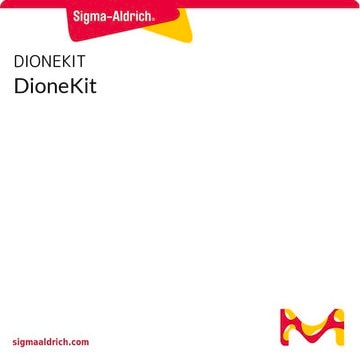650188
Methanol solution
suitable for HPLC, contains Methanol:Dimethyl sulfoxide 1:1 (v/v)
Synonyme(s) :
Dimethyl sulfoxide:Methanol solution
About This Item
Produits recommandés
product name
Methanol solution, (Methanol:Dimethyl sulfoxide 1:1 (v/v))
Densité de vapeur
1.11 (vs air)
Niveau de qualité
Pression de vapeur
410 mmHg
Forme
liquid
Limite d'explosivité
5.5-44 % (lit.)
Concentration
(Methanol:Dimethyl sulfoxide 1:1 (v/v))
Technique(s)
HPLC: suitable
Point d'ébullition
65.4 °C (lit.)
Pf
-98 °C (lit.)
Densité
0.954 g/mL at 20 °C
Application(s)
food and beverages
Format
mixture
Chaîne SMILES
CO
InChI
1S/CH4O/c1-2/h2H,1H3
Clé InChI
OKKJLVBELUTLKV-UHFFFAOYSA-N
Vous recherchez des produits similaires ? Visite Guide de comparaison des produits
Description générale
Mention d'avertissement
Danger
Mentions de danger
Conseils de prudence
Classification des risques
Acute Tox. 3 Dermal - Acute Tox. 3 Inhalation - Acute Tox. 3 Oral - Flam. Liq. 2 - STOT SE 1
Organes cibles
Eyes,Central nervous system
Code de la classe de stockage
3 - Flammable liquids
Classe de danger pour l'eau (WGK)
WGK 2
Point d'éclair (°F)
71.6 °F - closed cup
Point d'éclair (°C)
22 °C - closed cup
Équipement de protection individuelle
Eyeshields, Faceshields, Gloves, type ABEK (EN14387) respirator filter
Faites votre choix parmi les versions les plus récentes :
Déjà en possession de ce produit ?
Retrouvez la documentation relative aux produits que vous avez récemment achetés dans la Bibliothèque de documents.
Notre équipe de scientifiques dispose d'une expérience dans tous les secteurs de la recherche, notamment en sciences de la vie, science des matériaux, synthèse chimique, chromatographie, analyse et dans de nombreux autres domaines..
Contacter notre Service technique






